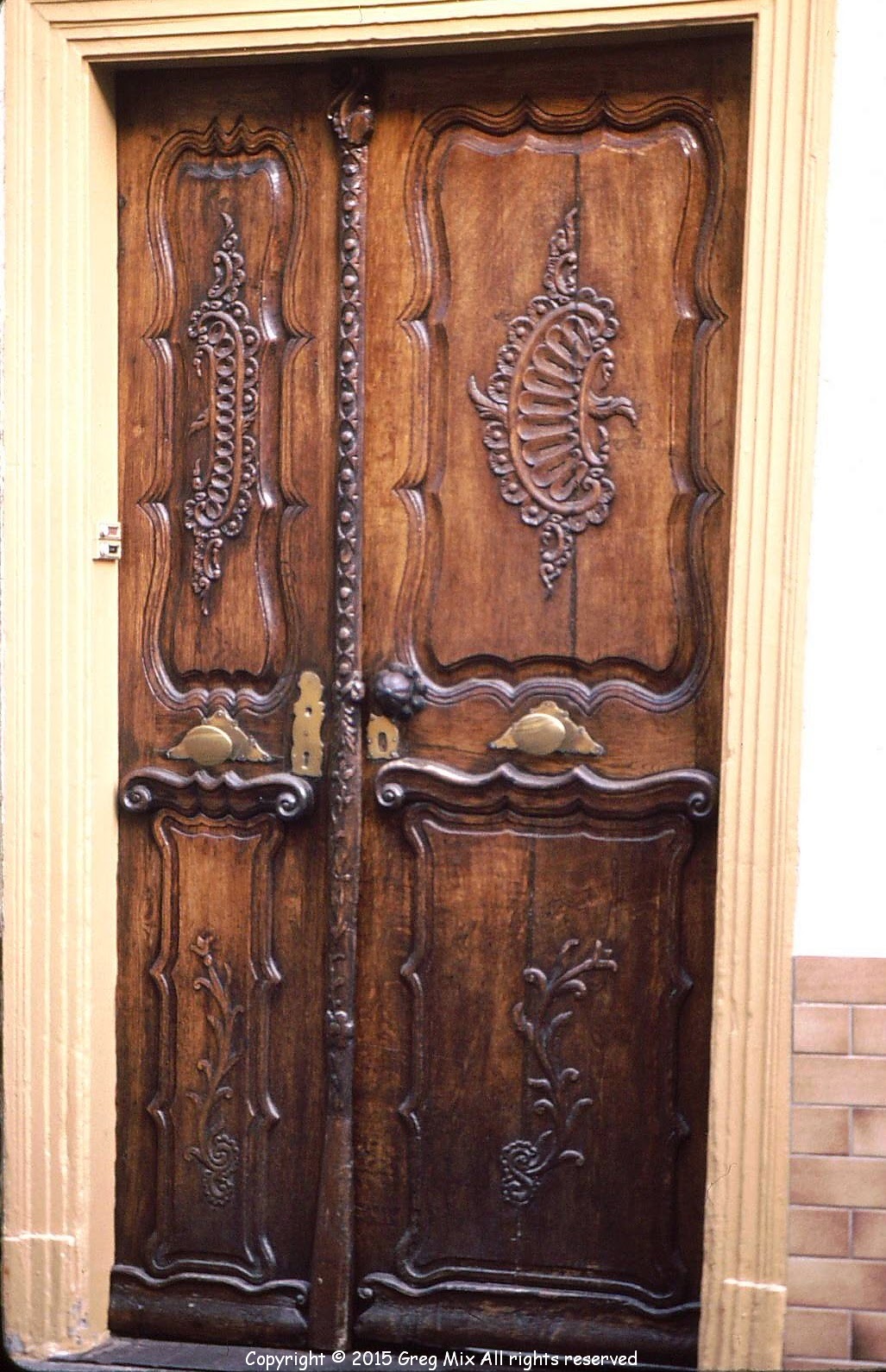While visiting the town of Saumur in the Loire
valley
of France we happened upon the work in progress of the renovation of a 500 year old home. The 500 year old Maison des Chapagnons.
 |
| Views of the town and river Loire. |
 |
| Looking upstream from the base of the castle le Château de Saumur |
 |
| Carousel in the center of the town of Saumur |
 |
| 500 year old Maison des Chapagnons after renovation and new additions. |
I remember my friend Francois in Paris had told me that each town in
France had an architectural review board. Nothing is allowed to be
built in France unless an architectural review board approves it and
then it has to match the existing architecture of the village. Although
the house was not new it still had many new additions including the
workshop across the square from the front of the house you could not
tell it from the rest of the homes in Saumur.
I was watching the workers cut stone for this new home. One man was using a hand saw to cut a piece
of fresh limestone while another mason was trimming a block of stone with a
hatchet. You see France sits on
a shelf of limestone. Just dig down
about five feet and you can find all of the limestone you need to build with. When it is first
quarried it is very soft and easy to cut.
Once exposed to the air it hardens and becomes more durable. Many of the finest chateaus in the loire Valley are built from
this stone. The whiteness of the stones used here are perhaps from the Bourré quarries in
the Cher Valle.
The house is actually used a school for French students who want to learn and help preserve the old building skills such as stone masonry, slate roofing, metal working and heavy timber construction. See this link for more photos http://erwan.levourch.pagesperso-orange.fr/sites_saumur.htm. The name of the place is Maison des Compagnons and it is a part of The Association Ouvrière des Compagnons du Devoir du Tour de France. here is a link to the schools website http://www.compagnons-du-devoir.com/.
As you can see from these photos the walls of the house are
cut stone, some of the walls are half-timber with brick and mortar infill, the
porch post and roof structure are heavy timber and the roof is slate with lead
flashing. if you study the design of the roofing details, the workmanship of the slate roof construction you will see that this house could easily last a thousand years. The timber work and trim work
has been finished to look older than it is in order to match the adjoining
buildings. The structural connections of
the timbers are done with wooden pegs. This
new house has small gargoyles on the top of the gable walls and it even has
them on the medieval well in the courtyard.
The slate dormers on the roof cantilever out over the window in the
French tradition. Check out this video showing how these historic structures are worked on by the students http://www.youtube.com/watch?feature=player_embedded&v=7AQ6lPe8D84#!






































